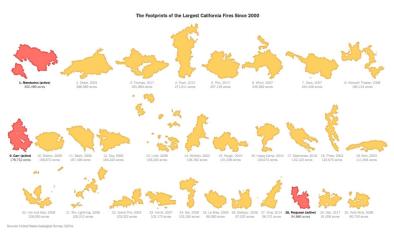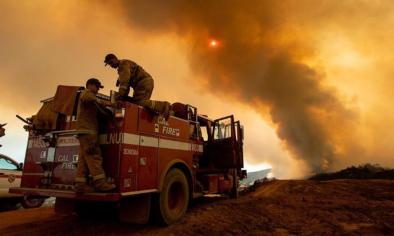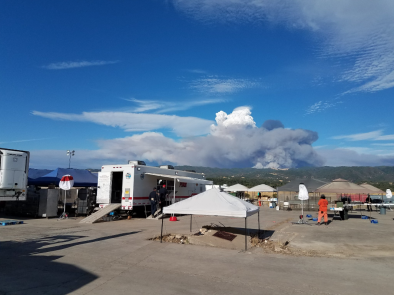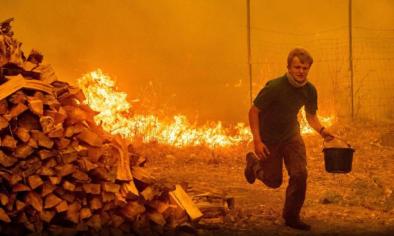Mendocino Complex fire racing at unprecedented speed into the record books

The massive Mendocino Complex fire jumped across at least four creeks, one major road and a fire line cut by a bulldozer in a single six-mile run this weekend toward Leesville, a tiny unincorporated way station in Colusa County.
Typically, any one of those breaks could have halted the spread of wildfire. But shifting winds and brittle-dry vegetation sent flames — up to 300 feet high in some areas — leapfrogging in all directions in three Northern California counties and on both sides of scenic Clear Lake, past these man-made and natural obstacles. The erratic conflagration has chewed through more than 273,000 acres and 68 homes in 10 days, making it the second-largest wildfire on record in California.
...
“It is extremely fast, extremely aggressive, extremely dangerous,” said Scott McLean, a deputy chief with the California Department of Forestry and Fire Protection. “Look how big it got, just in a matter of days.… Look how fast this Mendocino Complex went up in ranking. That doesn’t happen. That just doesn’t happen.”
The progression has been relentless. The Ranch and River fires, which may join at Clear Lake and are together known as the Mendocino Complex, are tearing through tens of thousands of acres a day, including overnight when fires normally calm down. The Mendocino Complex, which was 33% contained Sunday night, is raging in remote areas and therefore hasn’t been as destructive to property as some of the other dozen-plus wildfires burning across the state. But its sheer size and rate of spread is the latest signal of a remarkable fire year for California.
...
Lake County has been particularly hard hit by wildfire in the last five years. Two years ago, the Clayton fire tore through almost 4,000 acres and 300 structures, many of them mobile homes and rentals. The blaze hit the town of Lower Lake particularly hard, destroying a 150-year-old church and a Habitat for Humanity office. The wildfire followed three that ripped through Lake County in 2015, including the Valley fire, which destroyed more than 1,300 homes and killed at least four people.
UCLA climate scientist Daniel Swain cited several factors for the destruction in Lake County: explosively flammable vegetation, warm overnight temperatures and the lingering effect of years of drought.
“This is a part of the state that I think that overnight temperatures have played an enormous role,” Swain said. “It’s sort of this middle elevation where you’re above the marine layer but you’re not high enough in the mountains to really cool down either. So you’re sort of in this zone where fires can burn, with the increase in temperatures, as we’ve seen, all day and all night.”
A decade ago, some scientists would warn against making broad conclusions linking an extraordinary heat wave to global warming. But the pace of temperature records being broken in California in recent years is leading more scientists to assertively link climate change to unrelenting heat that is only expected to worsen as humans continue putting greenhouse gases in the air.
“In the past, it would just be kind of once in a while — the odd year where you’d be really warm,” state climatologist Michael Anderson said.
...
More than 15,000 firefighters are battling 18 large wildfires across the state that have burned more than 559,000 acres and are threatening 17,000 homes. As of a week ago, Cal Fire crews had responded to 330 more wildland fires so far this year than by this time last year, McLean said.
Related Content






